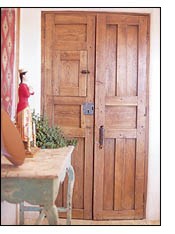
| |
What is the best way to setup a decorating budget?
Budgeting should start by setting an overall goal for the total cost of the project. The total cost, especially for construction and permanent items, should be like any business deal and take into account such factors as:
How long you will be in the residence - no use spending thousands of dollars on flooring and wall coverings if you are a renter, or plan on moving in a year.
Property values in the neighborhood - it is of no use to overspend compared to what the property values in the neighborhood can support.
What you can truly afford - it is OK to limit your spending to within a budget and pass on certain expensive items. Being frugal is important for every project, regardless of how much money you have. Many times you can get the same look and feel to a room without spending a fortune.
What your goals are - at the beginning and throughout the project you should remind yourself of what the goals are, and whether the goals can be accomplished without modifications or items on your list.
 
Once you have established the overall budget, it is important to create an itemized list of elements, and research the cost of each item. Researching costs, dimensions and other specifications has gotten much easier with the advent of mail-order catalogs and the Internet. Also, many furniture stores and online venues have added decorators to help you with your project at no cost. Use these resources as much as possible with ideas and budgeting to help develop a plan and refine the budget.
The itemized list should include items such as:
Wall coverings and Paint
Window Treatments
Flooring
Ceilings
Lighting
Furniture
Accessories
Remodeling Labor
The budget should be monitored as estimates are gathered for each item. It is a great idea is to determine how well you did against your budget at the end of the project. As many decorators and homeowners will tell you, they went over budget by 10-40%. Knowing this is important when setting the budget initially, so be conservative in the original budget with the knowledge that you will find that perfect new item you have to buy for the room, or, that the initial estimates turned out to be low.
Above all, don't be afraid to say no to pricey items so that you can stick to your budget. Even the wealthiest of clients have a budget, and are some of the most frugal when it comes to sticking to their plans.
Top
Back to Interior Design 101
|
|

|





